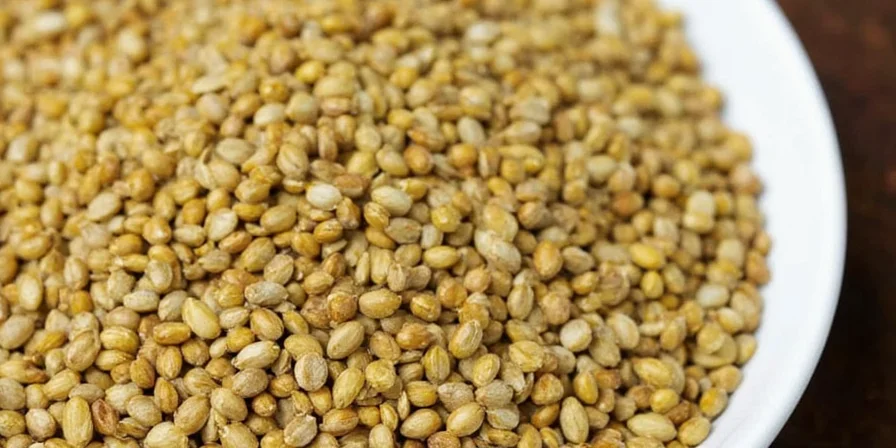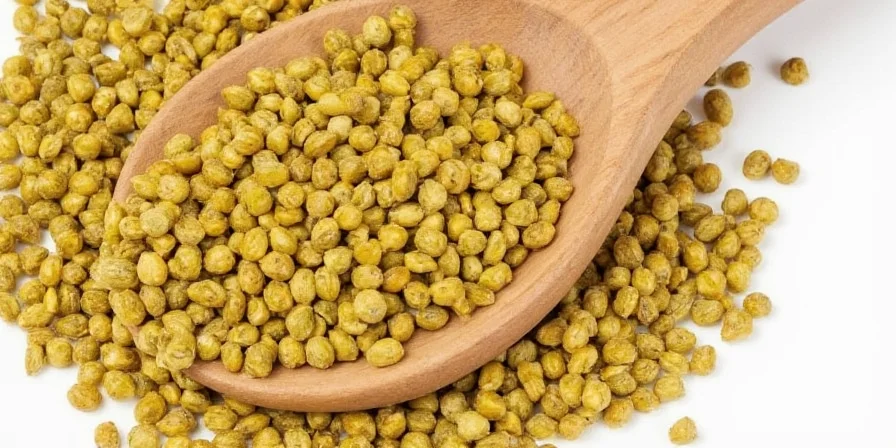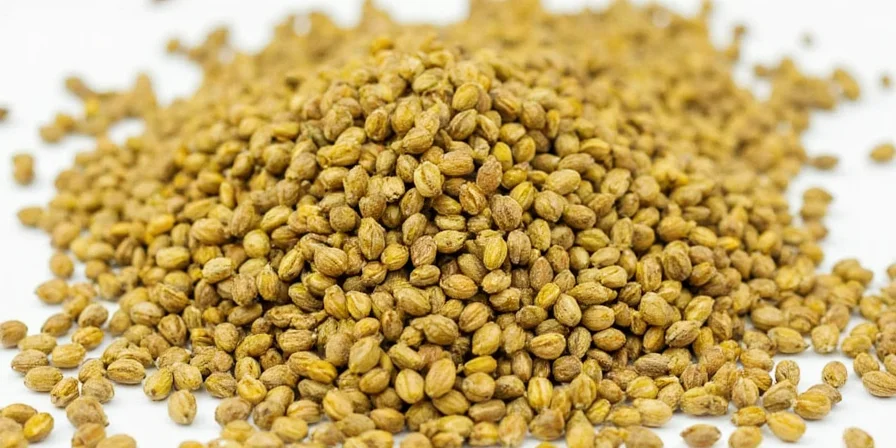Mustard seeds transform ordinary dishes into extraordinary culinary creations when used correctly. The secret? Understanding how each variety reacts to heat and liquid. Yellow mustard seeds need vinegar for full activation, brown seeds work best in Dijon mustard and Indian tadka, while black seeds release intense heat when fried in oil - perfect for Southern Indian sambar and Ethiopian stews. Here's exactly how to use them properly in your cooking.
Whether you're a home cook exploring global flavors or a culinary professional refining spice techniques, this guide delivers actionable insights you won't find in generic spice guides. We'll explore practical mustard seed applications, cooking techniques, and storage methods that deliver consistent results every time.
Table of Contents
- Mustard Seed Types: Which One to Use When
- Proven Cooking Methods That Work Every Time
- How to Store Mustard Seeds for Maximum Freshness
- Common Mistakes and How to Fix Them
- Nutritional Benefits: What You Actually Get
- Regional Cooking Secrets From Around the World
- Frequently Asked Questions
Mustard Seed Types: Which One to Use When
Choosing the right mustard seed makes all the difference in your dishes. Forget color - focus on how each variety behaves in cooking:
| Type | Best For | Activation Method | Flavor Result | When to Add |
|---|---|---|---|---|
| Yellow (White) | Emulsified sauces, pickling brines | Vinegar required | Mild, tangy | Add early in cooking process |
| Brown | Dijon mustard, Indian tadka, braises | Moisture and heat | Medium heat, nutty | Add to hot oil at beginning |
| Black | Indian sambar, Ethiopian wots | Releases heat rapidly when heated | Strong, pungent | Add to cold oil, heat gradually |

Pro Tip: Black mustard seeds create explosive flavor in slow-cooked stews - their intense initial heat transforms into deep nuttiness after 30+ minutes of simmering. This explains why traditional Indian sambar recipes always use black seeds rather than brown varieties.
Proven Cooking Methods That Work Every Time
Master these three essential techniques for perfect results with mustard seeds:
Dry Toasting for Nutty Flavor (Best for Yellow Seeds)
- Heat a dry skillet over medium heat
- Add 1-2 teaspoons of seeds
- Toast for 2-3 minutes until 70% pop
- Immediately transfer to cool surface
This method preserves some heat while creating rich base notes. Works best for salad dressings and grain dishes.
Wet Tempering (Tadka) for Indian Dishes (Best for Brown/Black Seeds)
- Heat 1-2 tablespoons oil until shimmering (about 350°F/177°C)
- Add 1 teaspoon mustard seeds
- Cover immediately (they'll pop vigorously)
- Cook for 30-60 seconds until seeds darken slightly
- Add curry leaves or other spices

Timing is critical: Add seeds to hot oil for immediate pop (more heat), or cold oil then heat gradually for deeper flavor development.
Mustard Paste for Sauces and Marinades
- Grind 2 tablespoons seeds to fine powder
- Add 3 tablespoons liquid (vinegar for heat, water for milder flavor)
- Let sit 10 minutes for full activation
- Stir in 1 teaspoon honey to balance sharpness
For creamier texture, blend with 1 tablespoon yogurt. Use immediately in marinades or sauces.
How to Store Mustard Seeds for Maximum Freshness
Proper storage keeps mustard seeds potent for months. Follow these science-backed methods:
- Whole Seeds: Store in amber glass containers away from light. Shelf life: 3 years at room temperature.
- Ground Mustard: Vacuum-seal with oxygen absorbers. Refrigerate for up to 9 months.
- Prepared Mustard: Keep pH below 4.0 with vinegar. Discard if separation occurs after shaking.
- Freezing: Freeze whole seeds in single-layer batches before transferring to containers to prevent clumping.

Common Mistakes and How to Fix Them
Even experienced cooks make these mistakes with mustard seeds:
Bitter Mustard Sauce? Here's How to Fix It
Bitterness means burned seeds or excessive enzyme activity. Add 1 tsp honey and 1 tbsp cream while whisking vigorously. The sugar binds bitter compounds while fat emulsifies volatile oils. Never add sugar before emulsification.
Stove Temperature Test Using Mustard Seeds
Heat oil to 350°F (177°C), add mustard seeds—they should sizzle and pop within 15 seconds. Slower indicates low heat; immediate violent popping means overheating. This leverages their consistent thermal activation point.
Reviving Old Mustard Seeds
If your seeds aren't popping, they've lost potency. Test by heating in oil—if no pop within 30 seconds, discard. Fresh seeds should pop within 15 seconds in properly heated oil.

Nutritional Benefits: What You Actually Get
Mustard seeds deliver measurable health benefits when used regularly:
- Selenium: 22 mcg per tablespoon (40% DV) - supports immune function
- Omega-3 Fatty Acids: 0.8g per tablespoon - supports heart health
- Dietary Fiber: 3.2g per tablespoon - aids digestion
- Antioxidants: Glucosinolates studied for metabolic pathway interactions
Cooking note: Dry heating preserves more compounds than boiling. For maximum nutrient retention, add mustard seeds toward the end of cooking.
Regional Cooking Secrets From Around the World
Master these traditional techniques that maximize mustard seed potential:
- Indian Tadka Technique: Heat oil until shimmering, add black mustard seeds until they pop, then immediately add curry leaves. Creates explosive flavor base for dals and curries.
- Ethiopian Wot Method: Bloom black mustard seeds in spiced clarified butter (niter kibbeh) over low heat for 5 minutes before adding other ingredients. Delays heat release for complex flavor development.
- French Dijon Secret: Combine brown mustard seeds with verjuice (unripe grape juice) instead of vinegar for more complex acidity.
- American BBQ Trick: Add yellow mustard seeds to dry rubs for subtle tang that complements smoked meats.

Frequently Asked Questions
What's the difference between mustard seeds and mustard powder?
Mustard powder is ground mustard seeds with turmeric and other spices added. Whole seeds provide texture and controlled heat release, while powder delivers immediate, consistent heat. For best results, use whole seeds for tempering and powder for emulsified sauces.
Can I substitute mustard seeds for mustard powder?
Yes, but with adjustments. 1 teaspoon mustard seeds = 1 teaspoon mustard powder, but seeds need proper activation. For dry applications, toast and grind seeds first. For wet applications, allow 10 minutes for full flavor development after adding liquid.
Why do my mustard seeds burn when I cook with them?
Mustard seeds burn easily because they're small and heat rapidly. Use medium heat (not high), add to oil that's hot but not smoking, and cover the pan immediately as they pop. For best results, use 1-2 teaspoons of seeds per tablespoon of oil.
How can I use mustard seeds in everyday cooking?
Add toasted yellow mustard seeds to salad dressings, brown seeds to potato salad, and black seeds to lentil soups. For quick flavor boost, add 1/2 teaspoon mustard seeds to hot olive oil and pour over roasted vegetables.
Getting Perfect Results with Mustard Seeds
Mastering mustard seeds comes down to understanding their simple activation principles. Use yellow seeds with vinegar for sauces, brown seeds for balanced heat in braises, and black seeds for explosive flavor in Indian and Ethiopian dishes. Remember the golden rule: add black seeds to cold oil and heat gradually for best results, while yellow seeds need vinegar for full activation. With these techniques, you'll consistently create dishes with professional-level flavor complexity. The next time you reach for mustard seeds, you'll know exactly how to unlock their full potential in your cooking.











 浙公网安备
33010002000092号
浙公网安备
33010002000092号 浙B2-20120091-4
浙B2-20120091-4